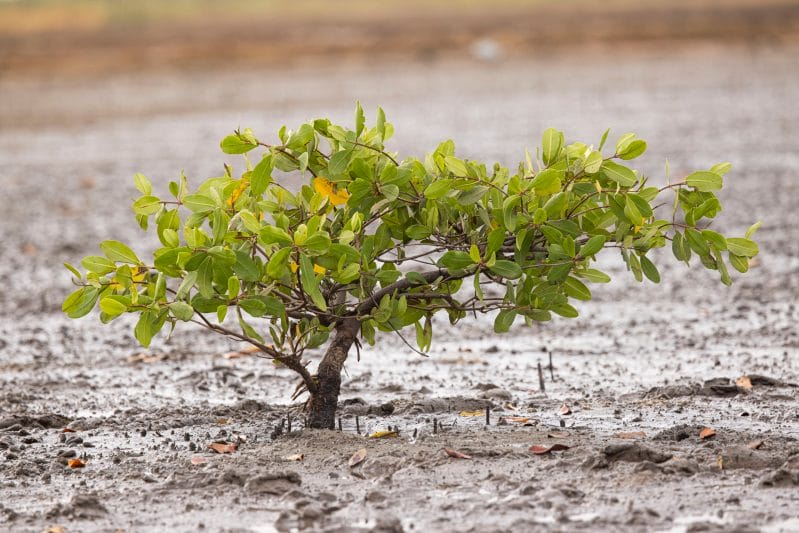…all to supply the demands of a growing (and increasingly wealthy) global population.
7 billion people, 8 billion people, 9 billion people, 10. All wanting, all expecting, all demanding. What a market opportunity!
So what’s the problem here? What’s the problem with supplying such a strong market? All it costs is our tropical rainforests. Not that much, surely!
Well, the costs are more than you think. They come from simple physics (well, at least it all starts with physics). And just like gravity, they work every time. Cutting down rainforests costs rain. That’s right – it costs rain!
Rainforests don’t grow where they do because there is so much rain there. There is so much rain there because of the rainforest! 30% of all our fresh water is made by rainforests. All that transpiration and evaporation from all those trees!
Just one giant emergent tree towering over the canopy of the forest can have over 1.6km square of leaf surface area of (that’s enough to cover the CBD a major city!) – with water evaporating out of all those leaves. And that’s just ONE tree,,,above hundreds! (No wonder the air is so humid in a rainforest!)
So when rainforests are cut down, the rain is cut too too. Less rain means drier land. Which means less trees. Which means more grassland instead. Which means less transpiration. Which means the land gets hotter. And drier. If it goes far enough, it can turn what was the richest most bio-diverse environment on the planet to a dry, dusty desert. Yes, that’s right. Tropical rainforest to dry dusty desert. All because of the laws of physics.
But it doesn’t stop here. There’s more. Cutting trees down costs clean water too. It makes river water dirty. Rather than soaking into soil, water rushes over it. Dirt and salts are collected by rushing water washed into rivers. Turbid (dirt-filled) water is no good to drink or cook with. Crops won’t grow with salty water. People can’t grow their food.
People are displaced from their land (and then where will they go?) Just picture the Yangtze, Or the Ganges. Or the Kelian. Just to name a few. Cutting down rainforests costs soil. Soil is lost in erosion when the forests are removed. Did you know it can take four hundred years for even 30cm of new soil to be made to replace what is blown or washed away? With deforestation it gets washed or blown away much faster than that! Nutrients are lost, soil hardens and becomes rock, nothing can grow in it (not new forest, not crops, not pasture). Mesopotamia collapsed from soil so damaged that crops couldn’t grow!
“A nation that destroys its soil, destroys itself.” So said Franklin D. Roosevelt. Floods are worse, so land, homes, bridges, roads, electricity supplies are all at risk. It costs habitat and biodiversity, and that’s a big risk because 50-90% of all of biodiversity lives in tropical rainforests. 50-90%! Of everything! Birds, bugs, plants, fungi, spiders, reptiles…! More life than you can imagine; evolved and packed into the most complex of ecosystems over millions of years in just 6% of our land area that rainforests occupy! (Habitat loss can have some surprising consequences as animals migrate and look for a new home, like giant 45cm long earthworms burrowing through rice terrace walls in the Philippines and making them collapse for the first time in 2000 years because they’re now migrating to find a new home can happen.) Up to 50,000 species are lost every year! About 140 species a day; a whole species gone every 10 minutes, forever. 50 more years of this and we could lose 25% of all species alive today.
If altruism isn’t enough of a reason to save these species, what about the amount of medicines we get from tropical rainforest species? Did you know that more than 2/3 of anti-cancer medicines have come from tropical rainforest species? And not like we need any more of this, but deforestation also adds carbon dioxide to the atmosphere, so it’s adding to climate change. 20% of greenhouse gas emissions come from burning the cut-down forests. And the old-growth forests, the best place for storing the most carbon (because they are the only living thing that grows more the older it gets, meaning they store more carbon the older they get) are taken away.
And all the things we use trees for, well, there’ll just be a whole lot less trees to use. How expensive will that make our timber products? Mesopotamia, Ancient Greece, Ancient Rome found this out. There were times that wood was more precious than gemstones it was so rare from deforestation driven by fueling the Bronze Age. Loss of rainfall, clean water, soil, floods, biodiversity, medical potential, loss of the trees themselves; what really is the problem with all of this?
At the rate forests are being cut down, you’d think there wasn’t one. Well, you see, it’s simple; We’re 100% dependent on our environment. For what? Everything! Like really, everything. Absolutely everything. The health and strength of our environment determines our ability to survive and the quality of life we can have. It will also determine how many people can live here, and with our population going up almost 50% in the next 30-40 years, this is really important. That “everything” includes our economy. While all the reasons for cutting down forests are about making money, a surprising (or maybe not really THAT surprising if you stop to think about it) thing is happening.
Cutting down forests is reducing income. Yes, it is costing income. Global GDP forecast to drop 7% by 2050 if deforestation continues unchecked. Living conditions for the world’s poorest people forecast to be halved in the same time. How is this a good plan? Well, it’s not really. We’d probably better have a look and see exactly what scale of problem we’re talking about here.
Did you know that tropical rainforests once covered 14% of the Earth’s landmass and now cover only 6%? Every minute 60 hectares of rainforest are being cut down. That’s 60 football fields every minute. 3,600 hectares an hour. 86,400 hectares a day. 31.5 million hectares a year. That’s 315,000km2 every year (about 1/10th the size of India).
And who has this problem? Well, most places with tropical rainforests. 20% of Indonesia’s rainforests gone just from 1990-2010. 20% of the Amazon is gone, 88% of South East Asian rainforests, gone. Madagascar has already lost 90% of its Easterm Rainforests. Less than 1% of Haiti’s rainforest remain. Deforestation in the Congo is accelerating faster than anywhere. Half the forest that stood around the world at the end of World War 2 is gone. 7.5 million square kilometers of forest; gone. And even though not every country has tropical rainforests, every country is dependent on them existing because the global ecosystems are connected.
So, what are our options? Keep going the way we’re going – and risk irreversible damage and loss?
Well, we could, but it’s probably not very smart. Better will be to protect what we’ve got left (and there are lots of great ways of doing that such as re-using, re-cycling, using alternatives, ecotourism, and really good laws). Ways that can save resources AND make money. Now THAT would be smart. And while protection is brilliant, and critically important, it’s not our only option. We can also do a lot to put back some of what we took out.
WE CAN RE-PLANT FORESTS! We might never get the mix that nature took millions of years to develop (in fact we’ll probably never get it back how it was), but doing something is an awful lot better than doing nothing and we can get an awful lot of benefit from reforestation.
The very smartest thing is to deal with three critical areas at the same time; the environment, society, and the economy. Any solution that has all these areas working is way more likely to last (which is what sustainability is all about). But how do you do that with something as complex as tropical rainforests?
It’s simple; start with planting trees! Lots and lots of trees. Lots of sizes, lots of types. Plant a forest! Food plants, fibre plants, medicine plants, just plant kind-of plants. Make a business of supplying the seed. And of the actual planting. And of looking after them.
Make it a place that provides food, so people can get food and income from the reforestation Empower the communities to do this. Train them in entrepreneurship: Long-term solutions. Real money benefit. Corporate social responsibility. A way out of poverty.
Causing social transformation, which will give you:
- Carbon storage,
- Forest restoration,
- Biodiversity restoration,
- Stronger, healthier, more resilient environment based on strong economy run by strong communities,
A long-term future with quality of life.
And it will Make Earth Cooler, and that can’t be a bad thing!
So: green forests or a dry desert? You get to choose!















